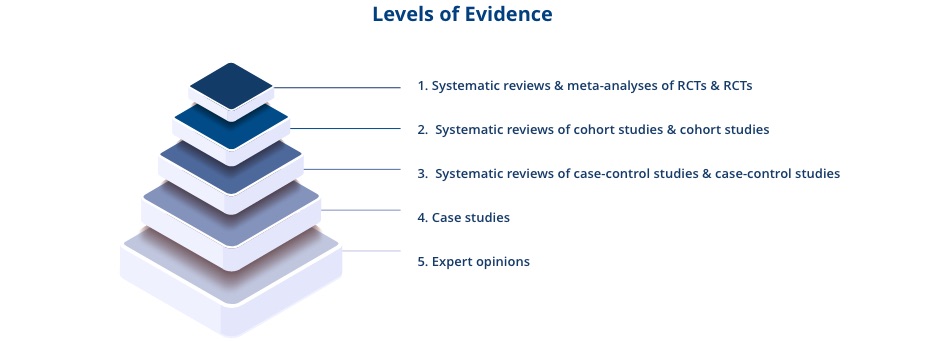Level 1
Randomized controlled trials are experimental studies that compare groups to establish the effectiveness or efficacy of a specific intervention. RCTs involve at least one test treatment and one control treatment, concurrent enrollment and follow-up of the test- and control-treated groups. The treatments to be administered are selected by a random process.
Systematic reviews combine evidence from relevant RCT studies. Extracted data from all of the included studies are combined to develop a broader picture of the evidence.
Meta-analyses are systematic reviews that use quantitative methods to summarize the results.
Level 2
Cohort studies are observational studies that identify participants who are exposed (or not exposed) to a particular risk factor. Participants are then followed forward in time to determine if they develop the disease under investigation.
Systematic reviews combine evidence from relevant cohort studies. Extracted data from all of the included studies are combined to develop a broader picture of the evidence. In Level 2, low quality RCTs are also included.
Level 3
Case-control studies are studies in which patients with a certain outcome or disease and an appropriate, often matched, group of controls without the outcome or disease are selected and then information is obtained on whether the subjects have been exposed to the factor under investigation.
Systematic reviews combine evidence from relevant case-control studies. Extracted data from all of the included studies are combined to develop a broader picture of the evidence.
Level 4
Case series are studies that tracks participants with a known exposure, such as participants who have received a similar treatment. In Level 4, low-quality cohort and case-control studies are also included.
Level 5
Expert opinions are views or interpretations without explicit critical appraisal, and are not based on physiology, bench research or “first principles”.
The article is provided for informational purposes regarding probiotics and is not meant to suggest that any substance referenced in the article is intended to diagnose, cure, mitigate, treat, or prevent any disease.





